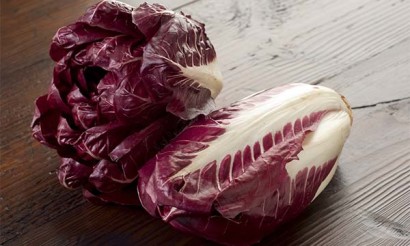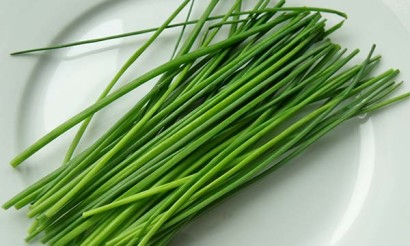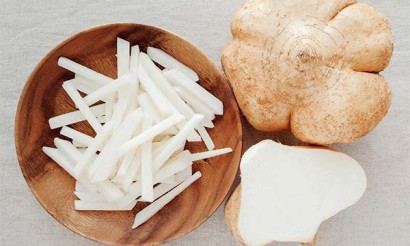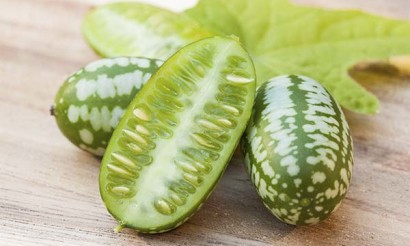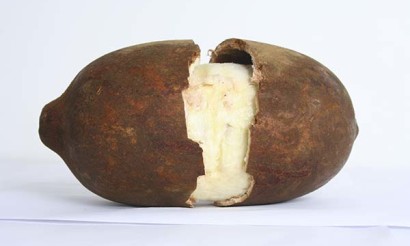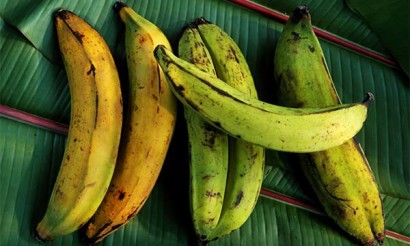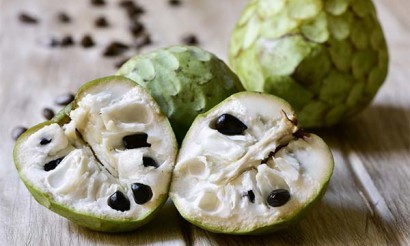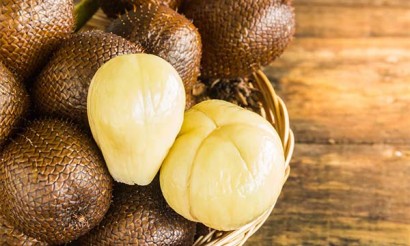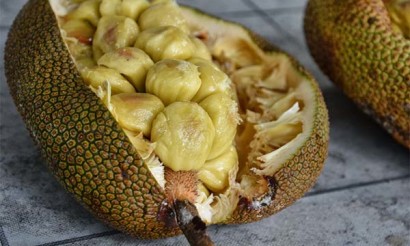Langsat: what is this fruit and why is it useful?
Langsat is the fruit of the tree of the same name, which is a member of the Meliaceae family. This exotic fruit is becoming increasingly popular around the world, especially among supporters of a healthy lifestyle. The fruit has an unusual flavor and aroma, it will appeal to all lovers of exoticism.
What is this fruit?
Langsat is also known as lansium. The fruit grows on evergreen trees that can extend up to 15-16 meters in height. The tree has a bulky, branchy crown and large, narrow leaves. When the tree reaches the age of 14-15 years, it begins to bear a lot of fruit, twice a year. The first harvest of fruit is taken in July and the second in January.

The fruits of this tree form conglomerates that look like bunches. They are in brownish skins, not pubescent, and resemble potato tubers in appearance. The peel contains aromatic substances, and when lit emits a pleasant smell - it is essential oils. Since ancient times, the peel of the fruit was not thrown away, it was dried and set on fire to protect against pesky insects.
What does it look like
In supermarkets and stores you can see twigs with grayish-brownish rounded fruits - these are the langsat. The fruit is cut with the branch and transported that way. A single fruit is up to 5 cm in diameter, inside the slices are whitish-transparent, each has juicy flesh and a small seed inside.
You can only see langsat fruit on the tree in countries where it grows in the wild or is cultivated. But in the store, more often than not, langsat is sold in twigs. On average, one bunch has up to 20 medium sized fruits, each weighing about 50-70 grams. You can choose a good fruit by examining and making sure that there is not a single crack on the surface of the peel. The skin of the fruit should be smooth, without any wrinkles or damage, without any spots. It should be slightly dry; if it is wet it means the fruit has been stored in the wrong conditions or has already begun to rot.
Langsat is rarely found in stores. The only reason for this is that it is difficult to transport. Because of the large amount of sugar, this fruit begins to ferment and spoil very quickly. This is why it is often picked unripe, so that there would be less damage during transportation. But unripe fruits are not as tasty - they are small, a little tart and not juicy. The fruit should not be too hard and not too soft.
Where does it grow
The homeland of this exotic plant is considered to be Malaysia, that's where you can find fruit trees in abundance, even in the wild. But this tasty fruit became known outside the country. Thanks to this today langsat is grown in many countries with suitable climatic conditions.
Langsat grows in abundance in India and is often used in cooking and is considered a good base for sauces and even added to some first courses. Many langsat-growing gardens can be found in the Philippines and also on the Indonesian islands. The climate of these countries is excellent for growing this exotic plant.
It is also possible to buy langsat in Thailand, where this fruit has also been cultivated for a long time. A couple of other places where this fruit grows even in the wild are Hawaii and Vietnam. A tropical climate is important for this plant, if the region is cold and dry, any attempts to grow langsat will fail.
What the langsat fruit is good for
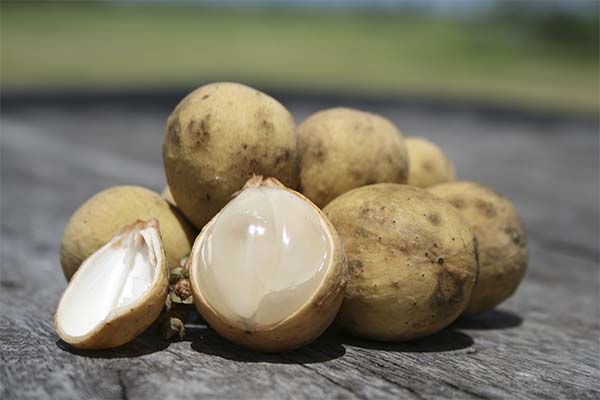
Langsat has a rich composition, it concentrates a large number of vitamins, minerals and other useful substances. That is why it is very useful for the body. Here are the main elements that make up the fruit:
- B vitamins;
- ascorbic acid;
- antioxidants;
- magnesium;
- calcium;
- rutin;
- potassium;
- sodium;
- phosphorus;
- iron;
- copper;
- zinc;
- alanine;
- glutamine;
- aspargin;
- polysaccharides;
- fatty acids (in the seeds).
Because of this rich composition, this fruit is great for a healthy, balanced diet. You should not consume it in large quantities on a regular basis, but it can serve as a good basis for desserts, breakfasts, fruit slices, smoothies, cocktails, rich in vitamins. This fruit has beneficial effects on the body:
- normalizes blood pressure;
- stimulates the production of digestive enzymes;
- strengthens immunity;
- Slows the aging process;
- Promotes rapid recovery from viral and bacterial infections;
- protects brain cells;
- normalizes blood circulation;
- improves memory and mental abilities;
- Makes the skin more elastic, prevents wrinkles;
- Stabilizes the gastrointestinal tract.
The main advantage of eating this exotic fruit is to make up for vitamin and mineral deficiencies. Due to this, all the systems and organs of the human body work properly. But such benefits of the fruit are available only when eating raw, not heat-treated flesh. Unfortunately, boiling destroys much of the vitamins.
In alternative medicine in Indonesia, Malaysia and India, the fruit pulp is widely used. They use it to make vitamin cocktails. The fruit is also infused with vodka, the drink reduces blood pressure, tones, gives strength and strengthens the immune system. Tincture in small quantities is used with apathy, with muscular dystrophy, anorexia, as well as in the recovery period after a long illness.
Langsat pulp is mixed with honey and aloe juice. Such a remedy is used for fungal infections, for viral and bacterial diseases. In such a combination, the ingredients restore the blood, prevent the development of inflammatory processes, protect the organs of the digestive system.
What harm can come of it
Despite the fact that langsat is considered one of the healthiest and most valuable foods, it can be harmful. First, it is a tropical fruit, which is easily and without problems assimilated by the inhabitants of the area where it grows. That is, it is not very suitable for Slavs, so to accustom the body to the digestion of such fruits should be gradual, so as not to harm the gastrointestinal tract.
If you are trying langsat for the first time, start with a minimum dose and see how your body reacts to the new product. Don't overeat, this exotic fruit has a laxative effect, and you may develop diarrhea. Also the potential harm is that langsat can provoke the development of a severe allergic reaction. It is better not to risk those people who have been diagnosed with an allergy to citrus fruits and various exotics. People prone to anaphylactic conditions in general should not experiment with food.
Another health risk is associated with the fact that the flesh of the fruit is very high in sugar, which means that diabetics can eat it only in minimal quantities. It is also undesirable to abuse langsat those who have acute diseases of the gastrointestinal tract and irritable bowel syndrome.
How to Eat Langsat Fruit Properly
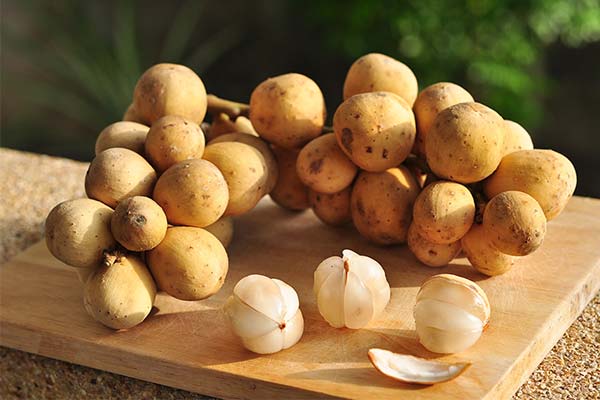
Langsat is often eaten raw, but it is also often used in cooking to create drinks, desserts, and sauces. This extraordinarily tasty exotic fruit needs to be peeled, with the edible part being the pulp. It is delicious both raw and cooked. Langsat is good for making sweets, but it is also used in garnishes.
To eat the flesh of the fruit, you need to peel it - from the stalk and down to remove the skin with your hand. You can pick it up with a knife. The inside can be divided into slices before serving. The main thing to remember is that if you bought a ripe fruit, in each slice there will definitely be a bone. In principle, it is possible to eat it, but if you uncover it, the whole impression of the delicate taste of the fruit will be spoiled. The thing is that the pips contain bitterness, and when you bite into them, they spoil the taste of the pulp.
What you can make with langsat
Langsat can eat even those who watch their figure - this product in its raw form contains only 60 kcal per 100 grams. The pulp of the fruit is often used in cooking because it is juicy and has a rich, sweet taste. In Asian cuisine, this exotic fruit is very popular. Dozens of different dishes are prepared from it.
Most often, langsat is used as an ingredient for the preparation of such dishes:
- smoothies and smoothies;
- yogurts;
- jellies;
- compotes;
- Fruit salads and spreads;
- sweet pastries;
- marmalade, marshmallows, candied fruits;
- jams;
- desserts of all kinds;
- alcohol and vodka tinctures;
- jams, jams, jams;
- sauces.
Chutney, one of the most popular dressings for meat and fish, is very often prepared in India. This gravy is based on langsat, with vegetables, lots of spices and herbs added to it. The result is a deliciously sweet and sour, aromatic sauce with spicy notes. Also lungsate can be preserved in its own juice, in the form of jam or jam.
Traditional medicine applications
Langsat is actively used in alternative medicine. It is known as a powerful tonic. But the most valuable part of the fruit in folk medicine are considered seeds, they are dried and used for internal use, for cooking decoctions and infusions.
The seeds of this exotic fruit have the following valuable properties:
- eliminate all kinds of intestinal parasites;
- normalize body temperature;
- stabilize blood pressure;
- stimulate brain activity;
- improve blood circulation;
- promote excretion of bile;
- prevent stagnation in the liver.
The seeds are brewed at a ratio of 1 tablespoon per 200 ml of water. You can just infuse, but if you want a more concentrated decoction, you can boil it for 2-3 minutes, and then wait until it cools, strain and drink 50 ml 3 times a day.
Cosmetic applications
In cosmetology, too, since ancient times the fruit is used. The extract from the fruit is used in the creation of moisturizers for wrinkles. Also the extract of this plant is used to make exfoliants, masks.
To see the effectiveness of langsat in skin care, you can prepare a mask from the fresh fruit yourself. To do this, take a teaspoon of olive oil, mixed with mashed pulp (10-20 grams), put on a clean skin. Rinse with warm water, not earlier than 10 minutes. If you repeat the procedure every day, the skin will become light, velvety, even tone. This fruit removes excessive pigmentation, moisturizes and nourishes.
There is a limitation - it is not recommended to use langsat to care for oily, inflammation-prone skin. Because of the large amount of sugar, pimples can develop more actively. The sweet environment is ideal for the reproduction of bacteria.
How to grow langsat
If you want to grow langsat in your garden - it is better to give up this idea right away, the tree will not take root. In a glazed room the tree can take root, also in the house you can grow this plant, but you should not expect it to bear fruit.
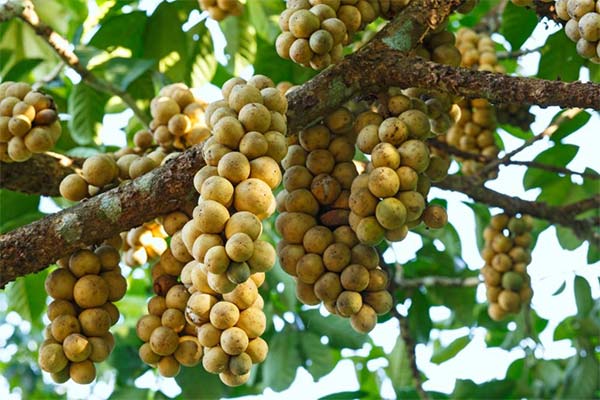
Florists who have experience in growing, speak of this plant as the most fastidious. Even if with great effort it will be possible to achieve the appearance of ovaries, any jump in temperature or decrease in humidity can lead to the fact that the fruits will simply fall off.
To grow a langsat from a seedling, you need to prepare a bulky pot. Soil should be neutral or close to alkaline Ph. It is important to put more drainage in the bottom, so the root system does not rot, water the plant will have to abundantly. In addition, it is necessary to regularly spray the leaves.
To allow the plant to develop normally, twice a year it is necessary to apply a complex fertilizer. As it grows, it is important to transplant into larger pots. It is also necessary to make nitrogen feedings during the leaf growth stage so that the greens will grow vigorously.
Langsat is a very tasty and healthy fruit. Growing it is difficult, but you can plant the tree, only as a decorative plant - the fruit is unlikely to ripen. Knowing how to choose and prepare this fruit correctly, you can get the maximum benefits from it.
«Important: All information on the site is provided for informational purposes only purposes. Before applying any recommendations, consult a health care professional. specialist. Neither the editors nor the authors shall be liable for any possible harm caused by materials."


